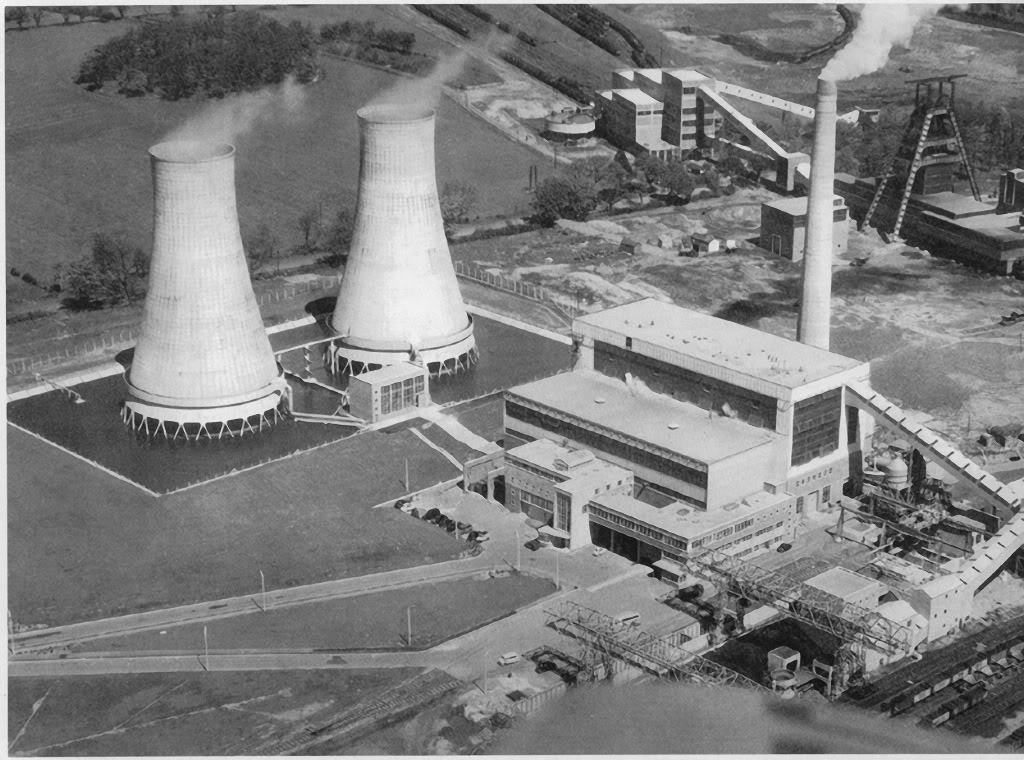Coal and Community
In 1906, Bairds & Damellington started sinking Barony nos 1 & 2 to the west of the mining village of Auchinleck, Ayrshire, with the colliery entering production in 1910. Prior to nationalisation Bairds & Dalmellington were one of Scotland’s largest colliery companies, controlling 12% of Scottish output alone on the outbreak of the Second World War.
Bairds & Dalmellington planned for Barony 1 & 2 to develop the coalfield to the west of Auchinleck, while the eastern section was worked at the nearby Highhouse colliery (sunk 1895-6), which had been acquired by the company in 1931. They commenced reconstruction of the colliery, and the sinking of a third shaft (Barony No.3), in 1937. Bairds & Dalmellington intended this to be developed alongside the new Killoch colliery (which was postponed and eventually sunk by the National Coal Board (NCB) in 1953 entering production in 1960). They envisaged that the reconstructed Barony colliery would produce 2,650 tons a day with reserves for 130 years.
World War II interrupted reconstruction at Barony, which was not completed until 1949. This included installation of the ‘A’ frame headgear, which would dominate the skyline and now stands as a monument to the colliery and the area’s mining heritage.

Barony Colliery 1960s
After nationalisation, the NCB intended that Barony and the planned Killoch colliery would employ miners displaced, and replace lost output, from other Ayrshire pits which were closing by exploiting the richest seams of the Mauchline basin. Barony was one of only two Scottish collieries that had a power station adjoining it (built by South of Scotland Electricity Board opening in 1953). In 1948, the colliery produced 1,520 tons per day and employed 1,264. The workforce was drawn from the local mining villages of Auchinleck, Cumnock, New Cumnock, Ochiltree, and further afield Sanquhar (in Dumfries and Galloway) and the textile village of Catrine. A large and, at times, productive pit, Barony was nevertheless beset by problematic geological conditions.
On 8 November 1962, disaster struck with No 2 shaft collapsing burying four men (Thomas Fyvie, contractor; Henry Green, oversman; John McNeil, deputy; George Wade, contractor). A concerted effort on the part of the miners, colliery, area and divisional management, mining unions, and local politicians saved the Barony from closure. Eventually no.1 shaft had to be filled in as well (shaft no.2 was sealed off after the collapse and investigation), but a fourth shaft, Barony no.4, was sunk in 1965.
Throughout the late 1960s and 1970s, Barony continued to be beset by geological difficulties and understaffing, affecting output and leading to marked losses. Like its neighbour Killoch colliery, Barony’s greater insecurity about the long term future of the pit has led to the suggestion that it was this that saw the colliery have one of the lowest votes of National Union of Mineworkers (NUM) Scottish Area in support of industrial action in 1982 (nonetheless 58% still voted in support), as well as for weakening the resolve of the strikers earlier in the miners’ strike of 1984-5, with 102 NUM/ SCEBTA members having returned to work by December 1984.

Cumnock strike committee, 1984-5 (Photo by Rab Wilson)
Barony was one of the last Scottish collieries to survive the closure lists of the early 1980s. Its neighbours, Highhouse and Killoch closed respectively in 1983 and 1986, and the neighbouring Barony SSEB power station in 1982. Barony finally closed in 1989.
This profile was written towards the beginning of our project, further material about Barony colliery is available at our exhibtion website.


/prod01/wlvacuk/media/departments/digital-content-and-communications/images-2024/240624-Alumni-Awards-2024-Resized.jpg)
/prod01/wlvacuk/media/departments/digital-content-and-communications/images-18-19/220325-Engineers_teach_thumbail.jpg)
/prod01/wlvacuk/media/departments/digital-content-and-communications/images-2024/240627-UN-Speaker-Resized.jpg)
/prod01/wlvacuk/media/departments/digital-content-and-communications/images-2024/240320-Uzbekistan-Resized.jpg)
/prod01/wlvacuk/media/departments/digital-content-and-communications/images-2024/240229-The-Link-Resized.jpg)
/prod01/wlvacuk/media/departments/digital-content-and-communications/images-2024/240627-Lady-Aruna-Building-Naming-Resized.jpg)